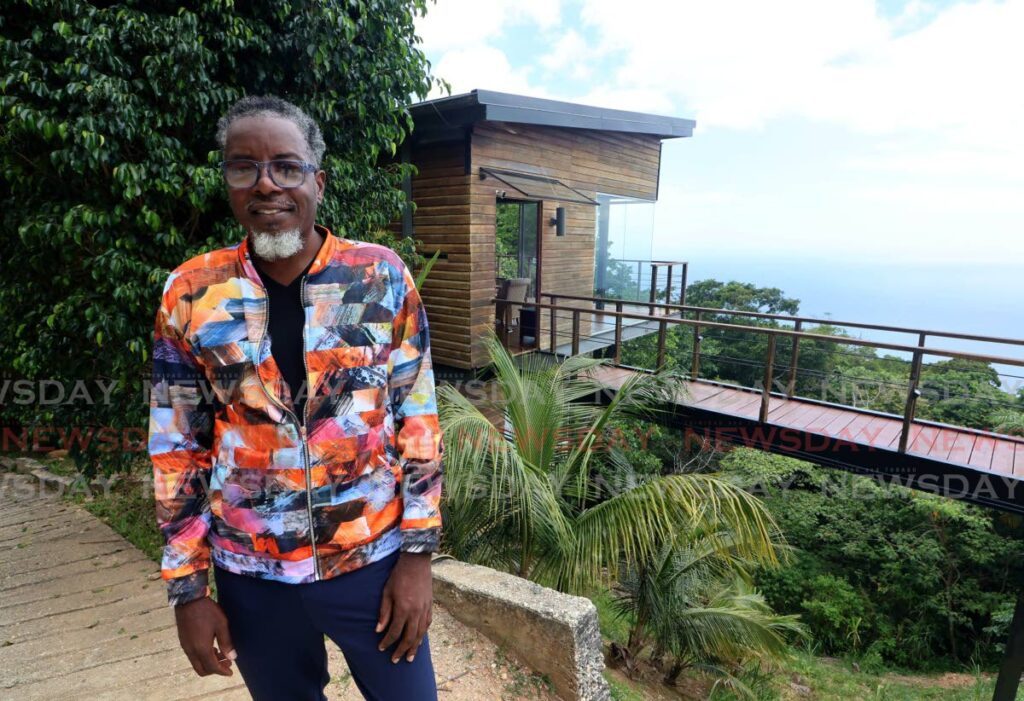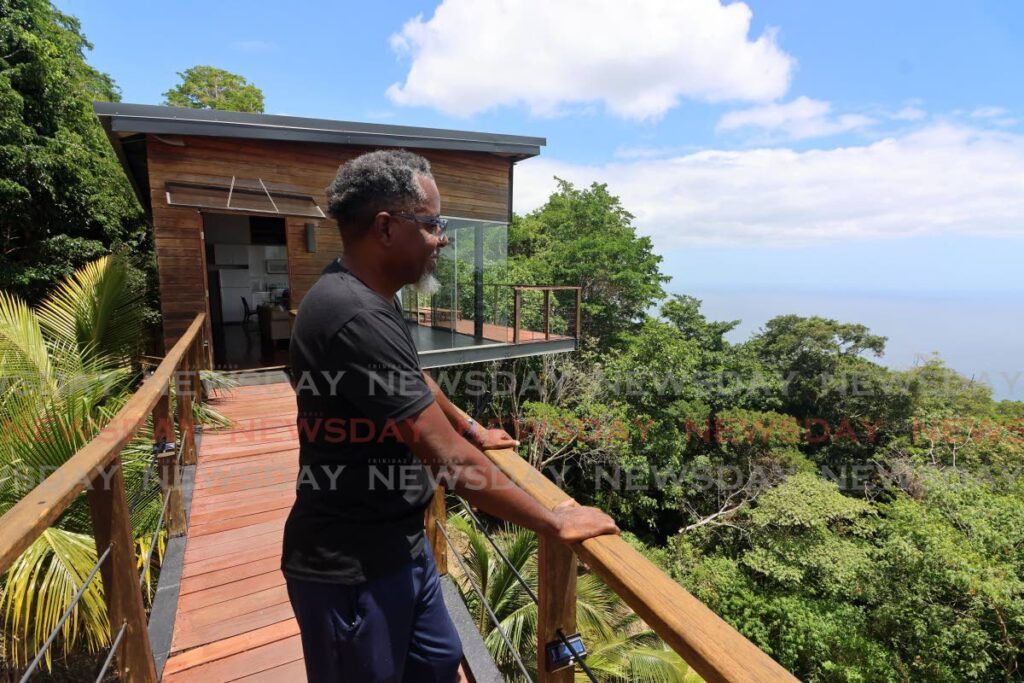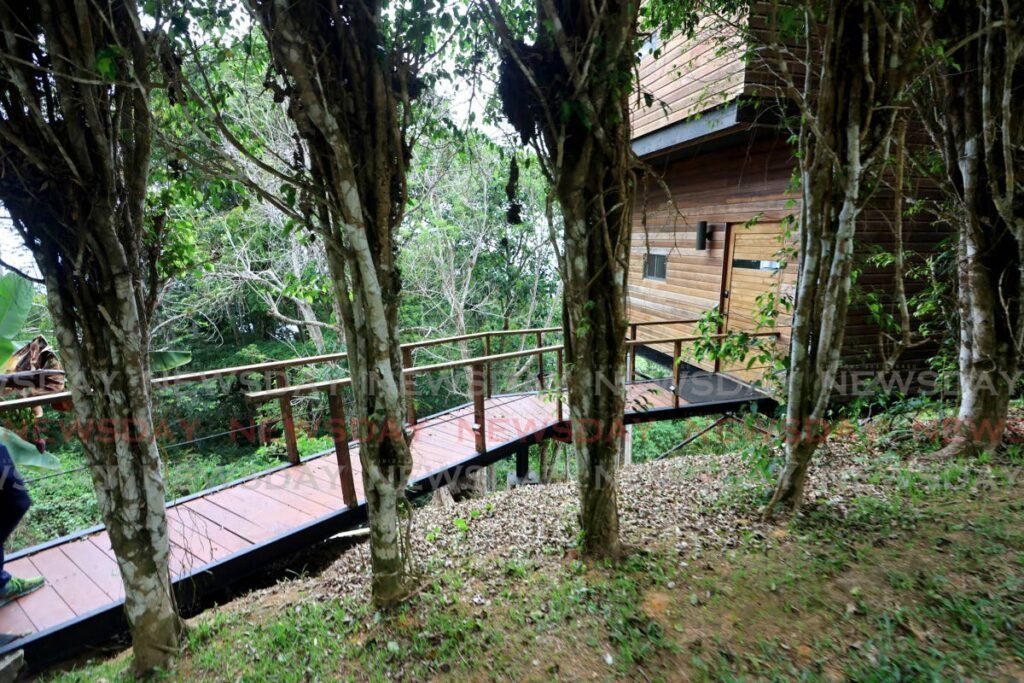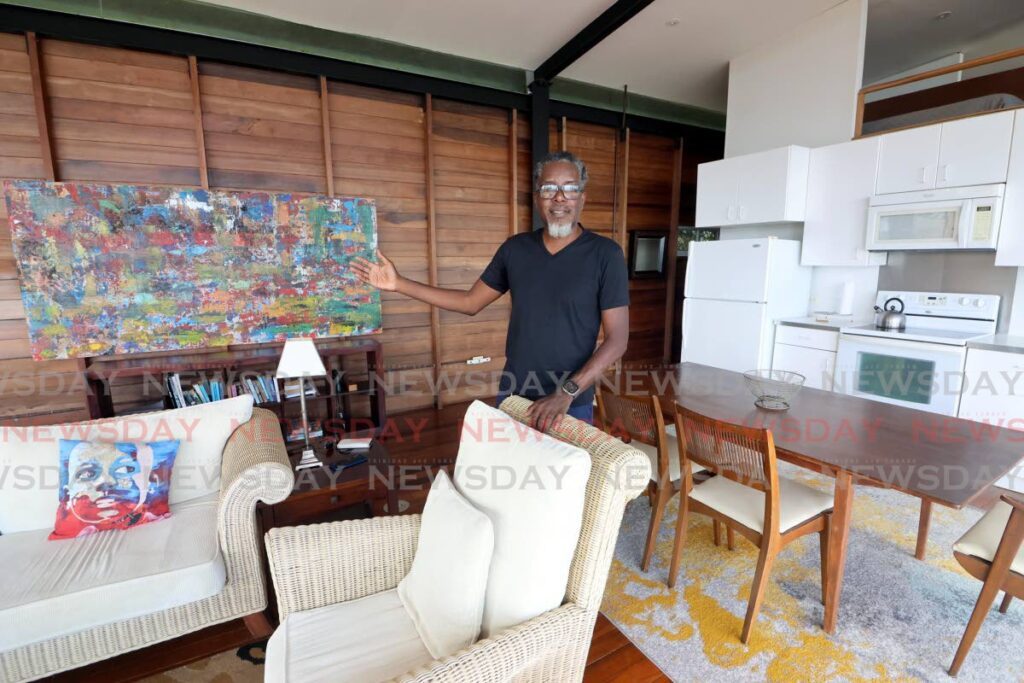Bridge Cabin opens up to artists in residence

Whether an artist is painting, sketching, sculpting, dabbling in mixed media or writing a best-seller, the comfort level of the space in which they work will determine the end result. Some may require serene, scenic spaces to work their magic, while others function well in noisy, chaotic spaces.
For visual artists who work better in placid environments, an opportunity to become an artist in residence at the secluded Bridge Cabin in the picturesque hills of Paramin is on the horizon.
Artist GA Gardner, who designed and built the cabin to be used as a private getaway for himself, told Sunday Newsday he has found so much inspiration in that space that he decided to open it up to fellow visual artists to work on their master pieces. Gardner fully understands what an opportunity like this could mean to an artist, as he too was once an artist in residence.

"I did a residency in Shanghai, China and in the US Virgin Islands. It was a wonderful experience," especially the Shanghai experience which exposed him to the many facets of the Chinese culture.
To date, Gardner's art has been exhibited at various museums and galleries in the US, Asia, and the Caribbean including the James E Lewis Museum of Art; Paterson Museum, New Jersey; Nanjing College of Art, China; Corridor Gallery, New York; Caribbean Museum Center for the Arts, St Croix; Bergen Museum, New Jersey and Morton Fine Art, DC. And although he has done work using different types of media, he has found himself gravitating to a more traditional medium, creating mixed-media collages and mixed-media paintings that explore cultural identity.
“We are not reinventing the wheel here by opening this space for artists in residence; we’re just following what has been happening around the world.
“This opportunity is open to all artists – from emerging to senior artists," excluding artists whose work involves the use of harmful toxins.
“This is an eco-friendly space and we want the environment to remain natural, not filled with toxic components. So artists who do glass-blowing, for example, will not be considered.”
He said selected artists will stay at the cabin anywhere between one and three months.
"They will have a space and freedom to create – day or night – whenever they feel like accessing the space. The length of time they stay will be determined by the level of their work. The programmes will be tailored to meet the unique ability of each artist.”
Accessed only through the steep hills that are synonymous with Paramin, the wooden cabin is located in a private, gated community. It has two levels of open-floor spaces that overlook the Caribbean Sea and soothing forest views from other angles. It is fitted with all necessary amenities and is close to hiking and nature trails. Gardner said successful artists in residence will use the lower level to work and the upper level as their temporary living accommodation.
At end of it, their work will be exhibited for sale at local galleries with which Gardner has partnered.
“We are casting a wide net,” to attract artists from around the globe.
Gardner, a member of the Art Society of Trinidad and Tobago, said he and other art professionals will provide mentorship to the selected artists.
“We have people skilled in every type of visual art. We will critique their work and create a nurturing experience…We also hope the programme will create networking opportunities and will build relationships among local and international artists.”

He said part of the package will also be promotion of their finished work.
“Artists themselves are usually not the kind of people that want to self-promote. We will teach them how to get out there to promote their work…and access people who can help them.”
For example, he said, conceptual art – an out-of-the-box type of visual art – is one of the most difficult types of art to sell.
“It deals with the writing behind the art. I can have a bag in the middle of the gallery and people may come to see the bag. But it’s not about the bag itself; it’s about what it represents.
“People walk into galleries and see weird stuff like that and it’s very hard to sell because it’s not always understood.
“When art and art ideas are not marketed properly, they die, and people get tired of creating it if no one is buying into it. How do you sell it? We will help our artists in residence figure that out.”
He said this type of programme can be funded through a number of different streams, among them grants and corporate sponsorship. This project will be funded by international art grants. But Gardner believes corporate TT should do more to help local artists produce more work. This, he said, would be a win/win for all stakeholders.
“At the end of the day, artists create so much beautiful works that can be used in corporate spaces or can form part of a collection.
“In Washington, DC, we have what is called the art bank, where, in support of local artists, district art galleries and art non-profit organisations buy art pieces that become part of the Art Bank Collection.”
These pieces are displayed in public areas and offices of government buildings.

He said there is also the Arts in Embassies programme, through which artists get their work displayed in US embassies globally.
“It puts the artworks in American embassies around the world or ambassadors' residences around the world. And the artists don’t necessarily have to be from the US; they can be from any country.”
He said, “We need to figure out ways to promote local artists and build relationships with foreign artists.
“Artists can apply for the residency through our various websites, including res artis.com – a network of various artist-in-residence programmes throughout the world. We are joining with them to promote our artist-in-residence programme.”
For more information on the Bridge Cabin artist in residence programme, visit
bridgecabin.com, gartsy.com, or follow GA Gardner on youtube.com/@gartsy, @gartsy.com on TikTok and gartsyart on Instagram.
About GA Gardner
GA Gardner was born in Trinidad and Tobago and migrated to the US in 1988. He earned his bachelor's and master's degrees in visual arts from San Francisco State University. He has a PhD in art education from Ohio State University where he focused on computer fine art and animation.
Gardner became known in the mid-1990s for his digital fine art, animation, and multimedia. He explored the various aspects of 3D digital work as a fine art medium as well as created several short animated films. At 25, he was appointed as a full-time professor of art at William Paterson University and prepared students for animation careers at major studios such as Pixar Animation Studio, Industrial Light and Magic, and DreamWorks SKG.
He wrote 25 textbooks and published over 100 books on the subject of art education which are used at universities in Asia, the US, and Europe. He has lectured and been an art education consultant at various universities including UCLA, Fashion Institute of Technology, and Florida A&M University. He also served as an associate professor at George Mason University and professor of art at the University of DC. His art was widely exhibited in New York's Soho art district. He was commissioned to do several album covers including that of hip hop artiste Rakim's The 18th Letter for Universal Records.


Comments
"Bridge Cabin opens up to artists in residence"